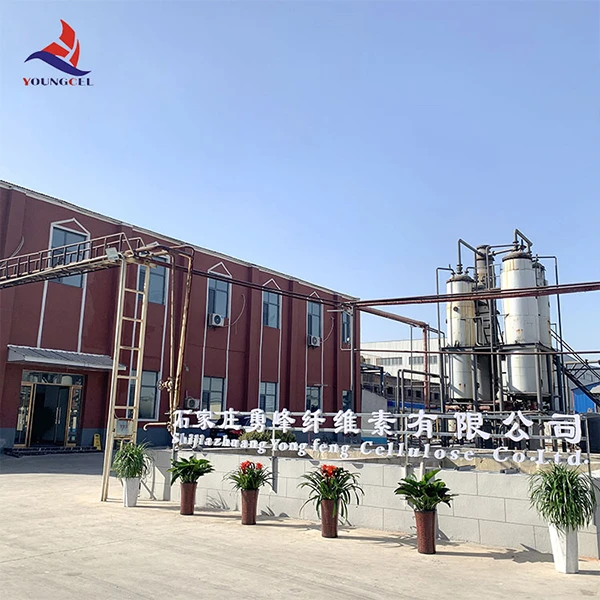Understanding HPMC in Construction A Key Component for Quality and Efficiency
Hydroxypropyl Methylcellulose (HPMC) is a versatile and essential additive in the construction industry, particularly recognized for its role in improving the performance of a wide range of building materials. As a non-ionic cellulose ether, HPMC is derived from natural cellulose and is widely used in various applications, from mortars and plasters to tile adhesives and paints. This article will delve into the significance of HPMC in construction, its benefits, and its applications.
What is HPMC?
HPMC is synthesized through the modification of natural cellulose, providing enhanced properties that make it suitable for use in construction materials. Its chemical structure enables it to dissolve in water, forming a viscous solution that can enhance the working characteristics of various mixtures. HPMC is primarily utilized due to its thickening, binding, and film-forming properties, which are crucial in construction applications.
Benefits of HPMC in Construction
1. Improved Workability One of the most notable advantages of incorporating HPMC into construction materials is the improvement in workability. It enhances the flow and consistency of mortars and plasters, allowing for easier mixing, application, and leveling. This is particularly beneficial in achieving a smooth finish and uniform application, reducing labor time and increasing efficiency on job sites.
2. Water Retention HPMC significantly improves the water retention of building materials, which is vital for ensuring proper hydration of cement. This enhanced water retention helps to prevent premature drying and cracking of mortars and plasters. By maintaining adequate moisture levels, HPMC allows for optimal curing, which in turn contributes to the strength and durability of the finished product.
3. Adhesion and Bonding The binding properties of HPMC enhance the adhesion of tiles, plasters, and other materials to various substrates. This is crucial for applications such as tile installation, where strong bonding is necessary to prevent delamination or failure. The improved adhesion qualities are particularly beneficial in environments where temperature and humidity fluctuations are common, ensuring long-lasting performance.
4. Resistant to Segregation The use of HPMC helps reduce the segregation of aggregates in mortars and plasters. This is essential for maintaining a consistent mixture and avoiding weak spots that can compromise the integrity of the structure. The stability provided by HPMC contributes to the overall quality of construction materials.
construction hpmc

5. Versatility HPMC can be tailored to meet specific requirements by adjusting its viscosity and other properties. This versatility allows manufacturers to create customized formulations for different applications, making it suitable for a variety of construction materials, including self-leveling compounds, joint compounds, and repair mortars.
Applications of HPMC in Construction
1. Tile Adhesives In the tile industry, HPMC is commonly used in tile adhesives to improve their performance. It enhances the adhesive's workability, allows for longer open times, and ensures a strong bond between the tile and the substrate.
2. Cementitious Products HPMC is a crucial component in self-leveling compounds and other cementitious products. Its water retention properties aid in achieving a smooth and durable surface, essential for both aesthetic and functional purposes.
3. Mortars and Plasters Incorporating HPMC into traditional mortars and plasters increases their flexibility and reduces cracking, which is particularly important in areas subject to movement or stress.
4. Paints and Coatings Beyond traditional construction materials, HPMC is also utilized in paints and coatings as a thickener and stabilizer, improving application properties and preventing sedimentation.
Conclusion
The role of Hydroxypropyl Methylcellulose (HPMC) in the construction industry cannot be overstated. Its ability to enhance workability, improve water retention, increase adhesion, and offer versatility makes it an indispensable additive in various building materials. As the construction industry continues to evolve, the demand for high-performance materials will only grow, solidifying HPMC's position as a key component in achieving quality and efficiency. For both manufacturers and contractors, understanding and utilizing HPMC effectively can significantly impact the overall success of construction projects, leading to better results and enhanced durability in the long term.
-
Rdp Powder: Key Considerations for Wholesalers in the Building Materials IndustryNewsJul.08,2025
-
Key Considerations for Wholesalers: Navigating the World of Hpmc - Based ProductsNewsJul.08,2025
-
Hpmc Detergent: Key Considerations for WholesalersNewsJul.08,2025
-
Key Considerations for Wholesalers: China Hpmc For Tile Adhesive, Coating Additives, Concrete Additives, and MoreNewsJul.08,2025
-
Crucial Considerations for Wholesalers: Navigating the World of Construction MaterialsNewsJul.08,2025
-
Key Considerations for Wholesalers Sourcing Additive For Cement, Additive For Concrete, Additive For Putty from Additive Manufacturer Shijiazhuang Gaocheng District Yongfeng Cellulose Co., Ltd.NewsJul.08,2025




